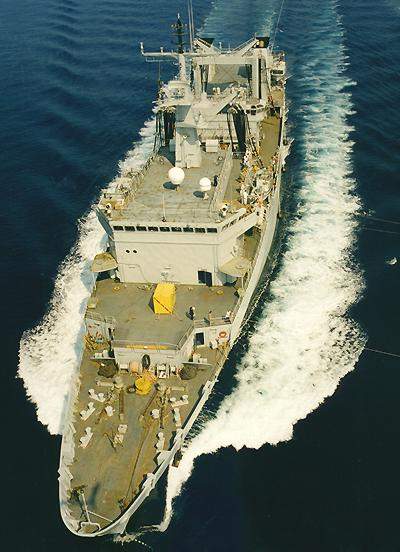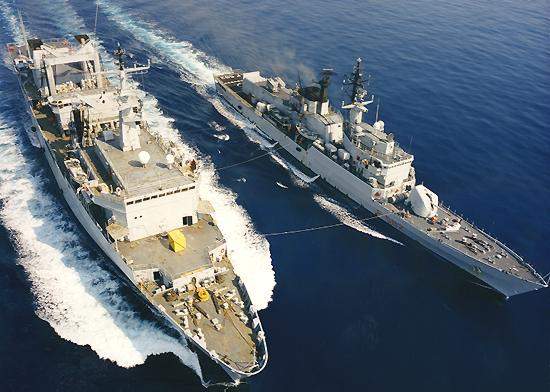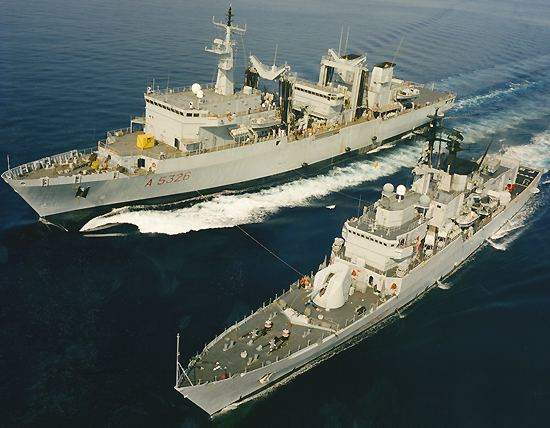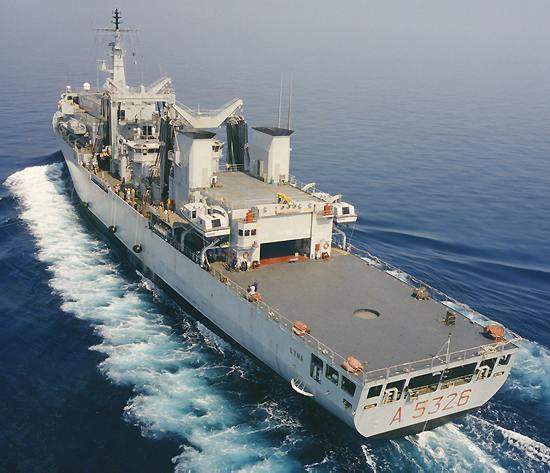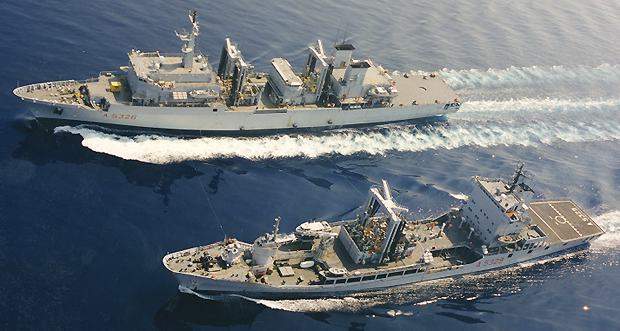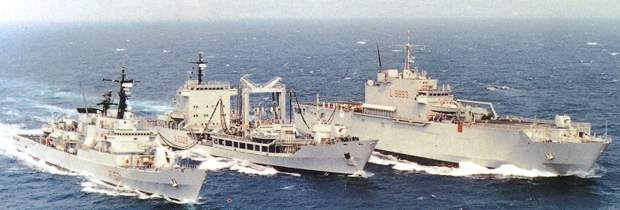The Etna (A5326) is a naval replenishment and logistic support ship built for the Italian Navy by Fincantieri at their Riva Trigoso Naval Shipyard. Fincantieri were awarded the contract for the Etna in July 1995, and the ship was launched in July 1997. Following successful sea trials in November 1997 the ship was delivered in February 1998.
The purpose of the Marina Militare MM Etna is to fully support the long-range missions of a naval squadron, which would typically include an aircraft carrier and complete escort. The logistic support vessel has to be in position to refuel the squadron, including the air wing of the carrier, and also provide full logistic support in terms of repair workshops, spare parts, ammunition replenishment and supplies.
MM Etna is also capable of performing civil protection roles at times of crisis. The ship has high autonomous capacity to provide electrical power, fresh water and prepared meals and also has fully equipped hospital and medical facilities on board.
WEAPONS
MM Etna has a limited weapons fit for self defence. The ship is equipped with a surface search radar (RASS) supplied by Alenia Marconi Systems, now Selex Sistemi Integrati, a Selex CTI 20 command and control system and an Elmer MAC integrated telecommunications system.
The ship has been prepared for the installation of a weapons fit including a Close In Weapon System (CIWS), an Oto Melara 76mm 62 calibre main gun, a Selex fire control system and an Electronic Support Measures (ESM) system.
HELICOPTER
MM Etna is fitted with a single spot flight deck, measuring 28 x 16m, for a helicopter such as the EH101 Merlin or the Agusta Bell AB 212. The hangar is large enough to accommodate an EH-101 size helicopter or alternatively can be used to store four 20ft standard containers.
The helicopter facilities give the ship the capability to re-supply warships by vertical replenishment (VERTREP). VERTREP uses helicopters to ferry supplies or men from ship to ship and is used to re-supply a ship which does not need to take fuel on board. VERTREP is also used to speed up the replenishment operation of a ship connected to one of the Replenishment At Sea (RAS) rigs.
CARGO SYSTEMS
Two ships can be replenished at the same time using four Replenishment at Sea/ Fuel at Sea (RAS/FAS) stations on two frames. The frames with constant tension cables are capable of transferring solid and liquid cargo, including fuel, aviation fuel and fresh water. The maximum rate of diesel fuel transfer is 650t/h. The ship is also fitted with a stern refuelling station. Stern refuelling is not as efficient as beam replenishment but provides safer operation in high sea states.
The cargo capacity includes 4,700t diesel fuel, 5,400t of diesel fuel overload, 1,200t of aviation fuel, and 160t of fresh water. The ship also has capacity for up to twelve storage containers. The ship has three reverse osmosis desalination plants for the production of fresh water, each at a rate of 40t per day. The ship has two 50t cranes and two 4t lifts.
PROPULSION
The ship is powered by two Sulzer 12 V ZA40S diesel engines with a maximum continuous rating of 8640kW at 510rpm. There are two reduction gears with pitch actuators, driving two independent shafts with controllable pitch propellers. The ship also has a bow thruster. The propulsion system provides MM Etna with a continuous speed of 21 knots at full load displacement. The range at an economical speed of 18 knots is 7,600 nautical miles.
Power generation is provided by two shaft generators each rated at 1000kW and four diesel generators each rated at 780kW.

